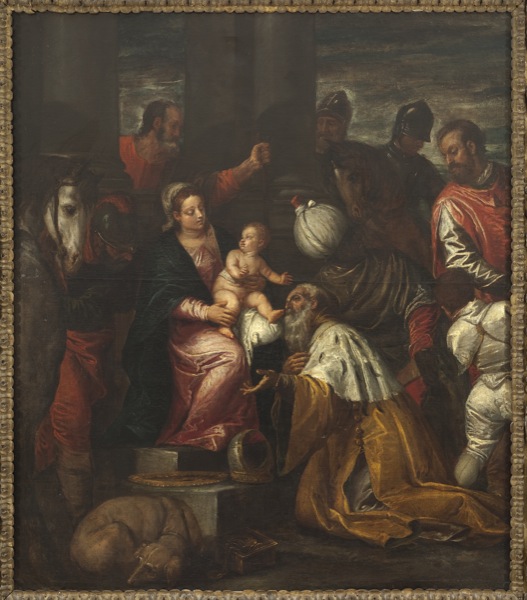
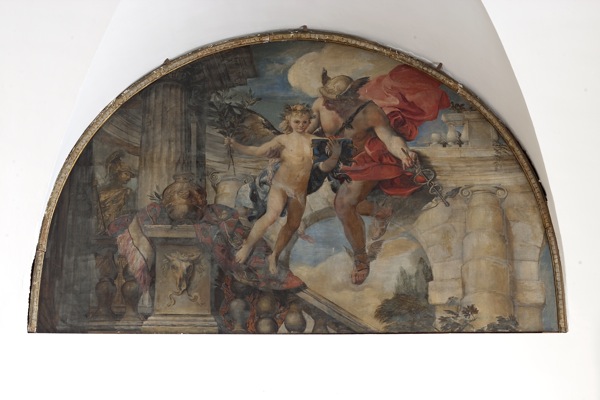
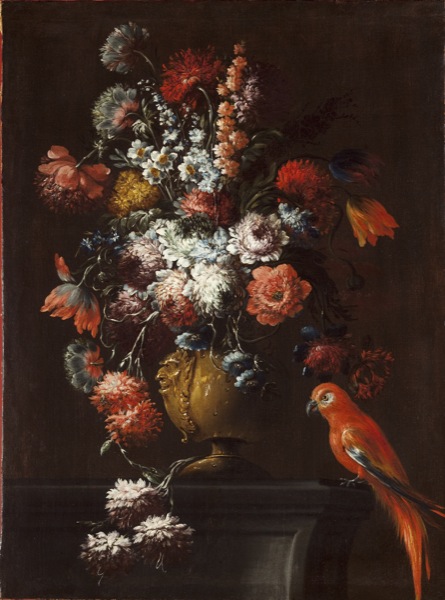
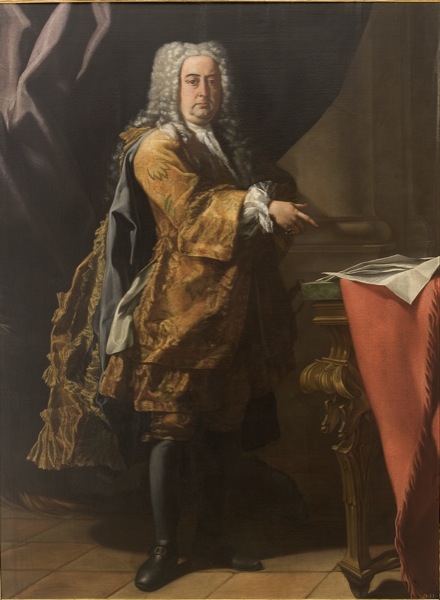
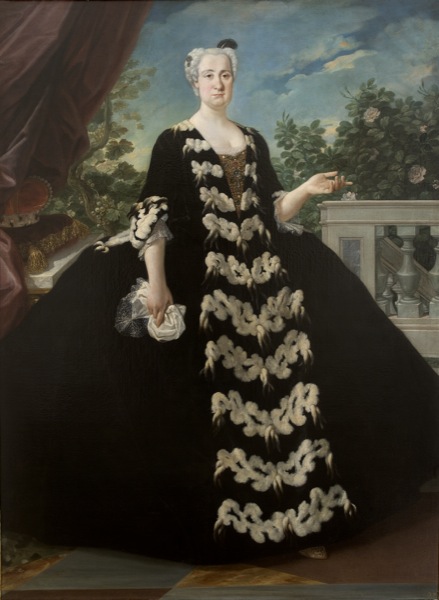
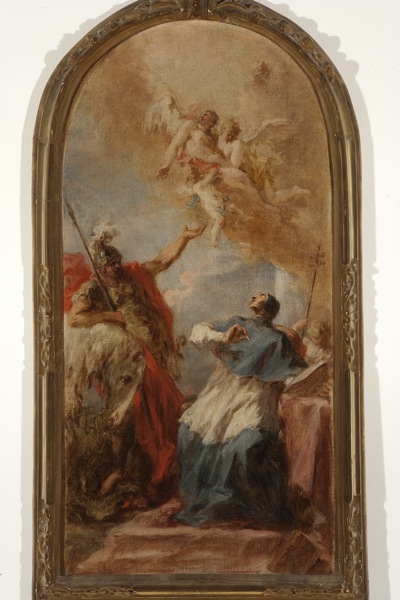
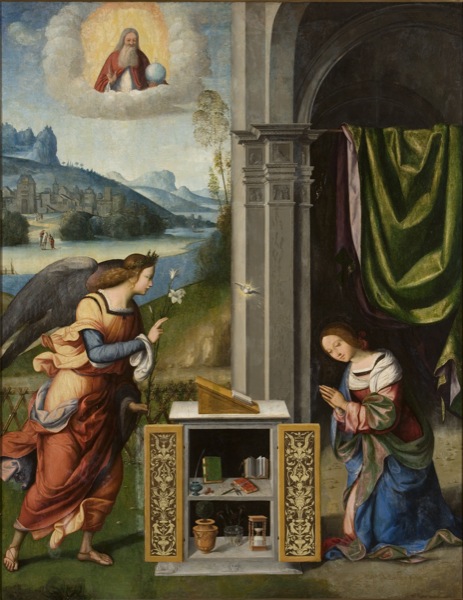
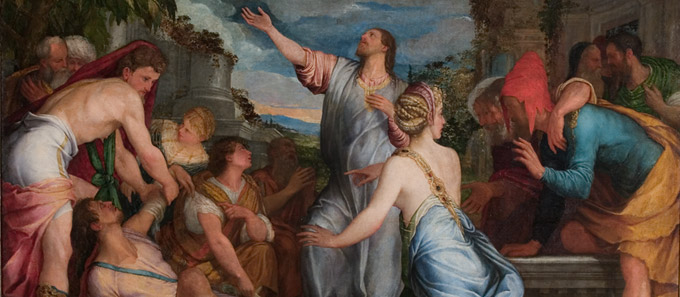
Historic Paintings
Alongside the paintings permanently on display at the Palazzo Cini Gallery, all of which come from Vittorio Cini’s art collections and placed in museums by the heirs’ will, Fondazione Giorgio Cini includes many other ancient paintings preserved at the monumental spaces on the Island of San Giorgio, also largely from Count Cini’s collection and transferred on several occasions during the 1950s and 1960s from Monselice Castle and Cini’s residence on the Grand Canal.
Among the Cini works, a number of fine masterpieces should be noted, such as the panel with the Annunciation (1506-1508) by Benvenuto Tisi known as Garofalo, a large altarpiece made by the artist from Ferrara during his stay in Mantua, under the aegis of Lorenzo Costa, which comes from the Olivetan convent of San Cristoforo in Mantua and which Vittorio Cini acquired in 1958 from the English collection Cook of Richmond; or the unique canvas with The Resurrection of Lazarus by Giuseppe Porta known as Salviati, of unknown original provenance, which ranks among the masterpieces of the Tuscan artist, in that ridge of years (about 1540) when the Tuscan-Roman manner penetrated Venice, merging with the experience of Titian and Bonifacio Veronese.
Also from the Vittorio Cini collections, the following should be noted: the late Gothic polyptych by Lorenzo da Venezia (Ceneda Master), a work consisting of original parts and remakes in the style of a skilled forger of the late 19th century; an altar icon with the Odighitria by Greek-Cretan madonnero that can be placed in the early 17th century; Paolo Fiammingo’s The Fall of the Manna, a quality example of the production of the Antwerp artist active in Venice influenced by Tintoretto material; the canvas with The Adoration of the Magi close to the culture of Paolo Veronese (Heredes Pauli ?), supplied with a magnificent coeval carved and gilded frame; three Neapolitan still lifes (one juxtaposed to the manner of Giovanni Battista Ruoppolo), representative of the rich genre collection which Count Cini had amassed in his Venetian palace; and the Portrait of the King of Naples Ferdinand IV of Bourbon, oscillating between the Neapolitan Giuseppe Bonito and the Emilian Francesco Liani, both active as painters at the court of Naples in the mid-18th century.
Other paintings, however, come from different donations and bequests, including that of Admiral Corso Pecori Giraldi (the beautiful pair of early 18th-century courtly portraits with Filippo Bernualdo Orsini Duke of Gravina and his wife Giacinta Ruspoli Marescotti, attributed to the Roman Marco Benefial); or that of the architect and engineer from Vicenza Fausto Franco, Central Inspector for Antiquities and Fine Arts and professor of Stylistic and Constructive Characters of Monuments at IUAV (Giovanni Antonio Pellegrini’s 18th-century sketch with the saints Lorenzo Giustiniani and George).
Among the recent donations (2017) is the one arranged by Fortunata Manzelli in memory of her brother Mario, a scholar of the 18th-century Venetian vedutismo, whose library and photo library Fondazione Cini preserves: a nucleus of eighteen paintings purchased by Mario Manzelli from the Venetian antiquarian market, including a Madonna and Child on panel of the ambit of Cima da Conegliano; a pair of Scenes likened to the brush of Nicolas Lancret; and a fine canvas with Rebecca at the well by Girolamo Brusaferro, the eighteenth-century artist who mediates the classicist culture of Bambini, Molinari, Bellucci, and Balestra with the rococo instances of Sebastiano Ricci.
